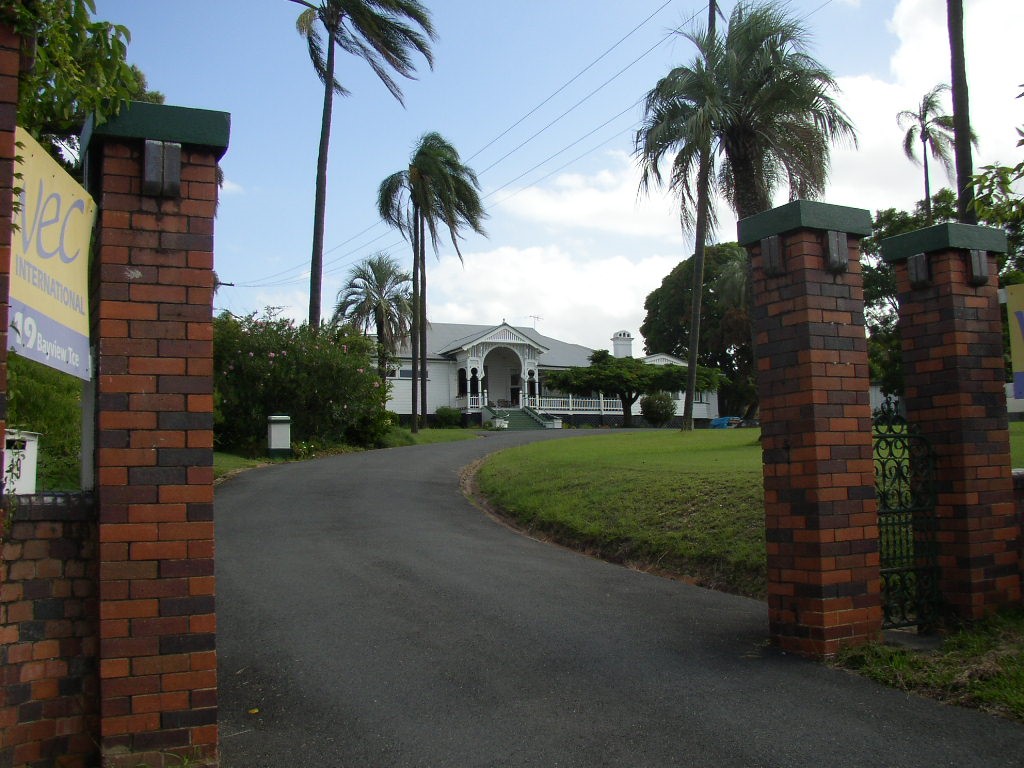Addresses
Type of place
House
Period
Federation 1890-1914
Style
Bungalow
Addresses
Type of place
House
Period
Federation 1890-1914
Style
Bungalow
This one-storey federation style house, and brick and timber fence, were constructed circa 1904 for successful Brisbane draper and outfitter Edwin Pike. In 1916 the house was transferred to pastoralist Michael Ryan, under whose ownership the house received two royal visits; one from the Prince of Wales in 1921 and the Queen Mother in 1928. It was also under Ryan’s ownership that the house received the name ‘Cranagh’. Although the house has undergone some alterations, it remains largely in its original form and is prominently located on a spacious block of land overlooking Bayview Terrace. This property presents a fine example of a house built by the upper middle class in Clayfield at the turn of the century.
Also known as
Cranagh
Lot plan
L7_RP51330; L1_RP51331; L8_RP51330
Key dates
Local Heritage Place Since —
Date of Citation —
Construction
Fence: Face brick;Roof: Corrugated iron;
Walls: Timber
People/associations
Edwin Pike (Occupant)Criterion for listing
(A) Historical; (D) Representative; (E) Aesthetic; (H) Historical associationInteractive mapping
Also known as
Cranagh
Lot plan
L7_RP51330; L1_RP51331; L8_RP51330
Key dates
Local Heritage Place Since —
Date of Citation —
Construction
Fence: Face brick;Roof: Corrugated iron;
Walls: Timber
People/associations
Edwin Pike (Occupant)Criterion for listing
(A) Historical; (D) Representative; (E) Aesthetic; (H) Historical associationInteractive mapping
History
Historical research indicates that this substantial Federation style residence was built circa 1904 for Edwin Pike, a successful Brisbane draper. It demonstrates the continued development of Clayfield at the turn of the twentieth century as a desirable address for Brisbane’s wealthier residents who built fine homes set in large grounds resulting in a distinctive pattern of development. The house and the surrounding brick and timber fence also have aesthetic significance.
The house is situated on land that was part of a portion of over 30 acres sold by the Crown in 1862 to Edmund Gregory. Around four acres of this land was resold the following year and eventually purchased in 1878 by Frederick Henzell, a Brisbane property speculator. Henzell subdivided the land and sold it as residential allotments.
Thomas Knowles purchased the property of George and Mary Izatt in 1890 and 1886 respectively, giving him over two acres of land in the block presently bounded by Bonney Avenue, Highclere Street, Queen’s Road and Bayview Terrace.
In 1901, Thomas Knowles sold his property to Edwin Pike, of the firm Pike Bros, a successful Brisbane draper and gentleman’s outfitter. He resided at this address until he sold the property in 1916 to a pastoralist, Michael (Mick) Ryan, who subdivided it into more residential allotments for his family in 1935, keeping the house.
According to the reminiscences of Ryan’s son-in-law, Bill Ahern, the house was named Cranagh, after Ryan’s village in Ireland. Ryan allegedly immigrated to Queensland as a young man and settled in the Blackall district where he eventually owned several “stations”.
The Prince of Wales is said to have visited the house in 1921 and the ballroom was added in anticipation of this occasion. The Prince attended a race meeting during his visit and allegedly commiserated with Ryan when his horse dropped dead during the race. Ryan was said to be a great gambler who was a member of the Queensland Turf Club committee. The Queen Mother also reputedly visited the house in 1928.
After the death of Ryan in 1944, the house was eventually sold in 1952 to the Young Mens Hebrew Association of Queensland Ltd. This organisation sold the property to the current owners, the Worldwide Evangelization Crusade, in 1958.
Although various alterations have been carried out to the house over the years, its original form and the ballroom added by Ryan have remained substantially intact.
Statement of significance
Relevant assessment criteria
This is a place of local heritage significance and meets one or more of the local heritage criteria under the Heritage planning scheme policy of the Brisbane City Plan 2014. It is significant because:
Citation prepared by — Brisbane City Council (page revised June 2022)

